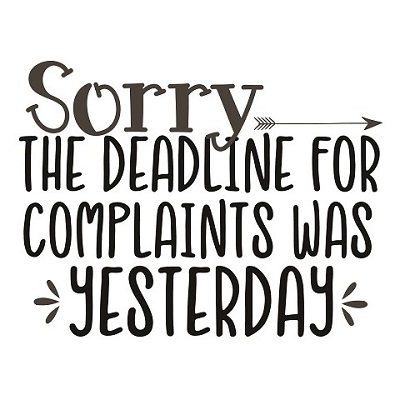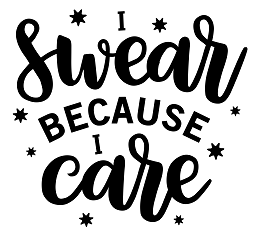 You hear a lot about it these days. Stress is the big baddie out there on the job, in the home and in relationships. So if everyone is managing it, why is it still a problem? Maybe we don’t understand how stress works, or at least how it works for us.
You hear a lot about it these days. Stress is the big baddie out there on the job, in the home and in relationships. So if everyone is managing it, why is it still a problem? Maybe we don’t understand how stress works, or at least how it works for us.
Could it be that you are giving it a bigger seat at the table of your life than it needs to have? Are you making the molehill into a mountain? Learn to once and for all put stress in its place. Who is the boss of your life?
What is stress anyway? People may guess that it’s something that makes them feel bad, yell at their kids, saps their energy and the like. A true understanding of where stress fits into your life (yes, we said “fits in”) and where it doesn’t is a key to knowing how to handle it.
Each person is different so what might work for you doesn’t necessarily work for another. While there are common signs and symptoms of stress, managing it is an individual process.
What is stress management? Saying that it is the way that you manage stress is not really an explanation. Keep reading to find out what goes into stress management and how knowing your triggers and touchy points can head off an episode before it gets to the boiling point.
Finally, what does “stress free” look like to you? Is that a realistic picture or are you setting yourself up for failure over and over again? Stress is not the enemy. Living with it may be more doable than letting it go altogether.
Do you have more questions than answers right now? That’s okay. We hope to answer many if not all and get you on the right path to regaining control of your life.
What is Stress?
You might have heard “fight or flight” mentioned in connection with stress. In that instance, stress is good. “Fight or flight” refers to how the body readies itself when danger is near. On television it’s hard to see exactly what is happening to characters that are facing danger.
In real life, however, your body goes through a process that allows you to be able to stand your ground and fight, or get away from danger as fast as you can. Here’s what happens within your body:
- Breathing speeds up to take in more oxygen. The brain and the muscles will need it for what may come next.
- Heart rate and blood pressure increase. More sugar in the blood is shunted to muscles, where it is needed should you have to use them. The blood flow is shunted to the core to decrease bleeding from external wounds you may sustain.
- You sweat. Sweating is the cooling off mechanism of the body.
- Hormones kick in. They increase adrenaline production so you can react quickly and move faster than you thought you could.
- Feelings of pain are diminished.
- Vision becomes more acute.
- Immunity is increased. Your immune system is ready to fight any damage sustained so you can keep going as you need to.
The body is now a sleek weapon that is ready for battle against any hostiles. This is important when you are in a car accident, facing a home invasion, involved in a natural disaster or a hostage situation. That type of heightened sense of self and your surroundings can save your life and/or that of others around you.
The body also expends a tremendous amount of energy to get you prepared for the fight or the flight. Once the threat is over, you can see how drained you will begin to feel as the body returns to normal.
Now, imagine feeling that state of alert all the time. Someone who is under extreme levels of stress could be experiencing that type of physiological reaction to everything in their life, from job deadlines to relationship troubles. It doesn’t sound too healthy, does it?
In the case of fight or flight, stress is great. It alerts us to danger and also helps us to face it from a physical standpoint. But, the boogeyman is not waiting around every corner in most first-world countries. There is danger, but it is not constant.
In everyday life, stress can result as a response to unexpected circumstances. Without a game plan for dealing with what we know as “stressors,” the body begins to go into overdrive and get those booster rockets warmed up.
As you might think, that level of intensity is only meant for short periods of time. If kept up chronically, the machinery of your body begins to show signs of wear and tear – resulting in breakdown.
With all that said, stress is our response to different stimuli in our lives. When they are life-threatening, stress works in our favor. When the situation is smaller but not managed, the response may be the same. Fortunately, it doesn’t have to be that way. Knowing the signs of stress can assist with heading it off.
What is Stress Management?
When you hire someone to manage something like a store or a company, the plan is for them to create a well-run enterprise. It is not to put out fires (although they may need to do that from time to time, but not habitually). The same goes for stress in your life.
Stress management begins in advance of the stress. Having a plan in place, an awareness of your stressors, an understanding of your stress risk, and an idea of how you want a situation to flow, makes a big difference in the amount of stress you experience.
So, before we discuss anything about handling stress once it’s here, we are going to go back to the beginning and hit this issue from another side. Practicing stress management can keep you from the physiological responses of “fight or flight” until you truly need them.
Learn to approach your stress with a response equal to the danger. Small stressor = small response. When you have a plan to see your way through, what was once a big deal for you may not even register on your stress-o-meter now.
Evaluate Your Stress Level
Risk Assessment
Emoticons are great little tools. When you text, people can’t see your face, but they can get a sense of how you feel about something through the funny faces you choose to follow your statements with. When you are in a “stress-free” zone, you are all smiley like those big beaming emoticons.
It is sunny everywhere you go. When you encounter a snafu, the smile might become less pronounced but you are still in control, utilizing problem-solving skills to get ahead of the problem.
Now, we venture into the state of the wavy, quivering lip or the bared teeth. This occurs when you are irritated by too many things happening at once. The ability to solve may still be there but the time factor could set you in a fit.
You know you’ve hit a low note when everything on your face appears as a severe line. The furrowed brow and the tight lips say, “Don’t even talk to me right now.” Moms are good at this look – just ask their children.
The worst stage of stress is when you feel like screaming your head off from the rooftops. Something as simple as getting the wrong order at the drive-thru or finding a stain on your shirt sends you into a tailspin that could last for days. Those emoticons are funny to see but not to experience first-hand.
Your Triggers
Now that you know what “stress-free” and “stress-full” look like, what will it take for you to reach each one of these stages? We’ve talked about assessing your risk, but entering each stage will look different for each person. Maybe screaming kids are a challenge to you if you are a teacher. For a stay-at-home mom it may be the proverbial straw.
Begin by identifying the sources of stress in your life right now. Maybe you are short staffed at your job and the workload is piling up. That is a potential source of stress. Is a family member ill? Are you a caregiver to an aging parent? Maybe you or your spouse has lost their job. This is a major stressor for many after the recession a few years ago.
Now, what is your attitude towards your stressful situations? Do you expect things to be stressful all the time? Maybe you don’t but comments you make might speak to the contrary.
Telling others that your life is always crazy or that things won’t get better at work can become ingrained and actually contribute to the stress you experience. Your thought language has to match the desired outcome for any type of stress management techniques to work.
Keep a journal of your stressful encounters. Record when they happen, what else is going on in your life at the time, how you felt and also how you handled it, if you did. Journaling can yield some surprising insights for you, especially concerning your thoughts on certain situations.
Know the signs that you are not coping well. This is usually a sign that you are reaching the “shouting from the rooftops” danger zone. They include, but are not limited to:
- Overeating
- Not eating
- Smoking
- Drinking
- Sleeping more than usual
- Insomnia
- Self-medicating with over-the-counter pain meds or prescription pills
- Withdrawal from favorite activities as well as family and friends
Viewing Your Stress from Another Perspective
Dealing with stress can be a difficult situation. It could mean giving up people, activities and places that are familiar and comfortable. As you might imagine from some of the signs of too much stress, your life can become unhealthy rather quickly. Avoiding the stressor could be the first step in seeing your stress from another perspective.
You can’t avoid your job because you have to work, but you can stay away from toxic co-workers who only feed into your stress with their “doom and gloom” attitude. Changing to another department could also be a viable option to lower your stress level in the workplace.
At home, if discussing issues with your partner is getting nowhere, engage a non-partisan third party like a counselor.
If too many activities on your plate always lead to a bad situation, learn to say “no” more often. It won’t help you, your reputation or your health if you continue to overload yourself believing that you will be able to handle it one of these days.
Change the stressors in your life. That could begin with altering your perception of why it is stressful. Express your feelings about the situation. You might feel your family takes you for granted when they always want to host functions at your home.
Making your feelings known can result in a compromise. From now on, the family may still want to meet at your house but they will provide the food and activities. Because you voice your feelings when you first feel the stress, a dialogue can commence that might just solve the issue before it becomes an all-consuming problem.
Gain a better sense of discipline. This includes managing your time more efficiently to accommodate a bigger workload, your kids’ schedules and new events in your life. There is nothing wrong with free time. It allows for unexpected changes. Getting things done on time, or early, can lead to a peaceful and restful mind.
Change your attitude towards the stressor. If you are heading back to school, then late nights with books as well as working a job can lead to stress. The knowledge that you are working towards a bigger goal can ease the situation as well as shifting your view of it.
Instead of complaining or giving into the stress, you discover ways to handle everything and remain in control. If the situation can’t change right now, adjusting your attitude could make all the difference. Stay in control as much as you can.
Accept the stressor in your life. A sick parent is a reality for many. The situation is not within your control. In this case, find ways to manage your part within it. Seek a counseling group to voice your frustrations. Ask for help so that you can take care of your own family at the same time.
Look to joyful moments in the process and cherish them. Let go and accept that you don’t have all the answers. Stay in control of what you have control over – like your feelings, your actions and your attitude.
Final Thoughts
What does stress free look like? If we knew that, we’d have a million dollars or more because we’d sell it to everyone. Really, though, there is no such thing as “stress free.” Those that try to sell you that are fooling themselves and you. Strive for “low stress” instead of “no stress.”
Remember, stress is good at times. It can protect you during life-threatening situations. It can also challenge you to become a better person, both personally and within the community.
One way to live in a low stress zone is to head off the problem before it begins. Right now, you can probably identify at least five stressors. Use the information above to tackle them while triaging future issues.


